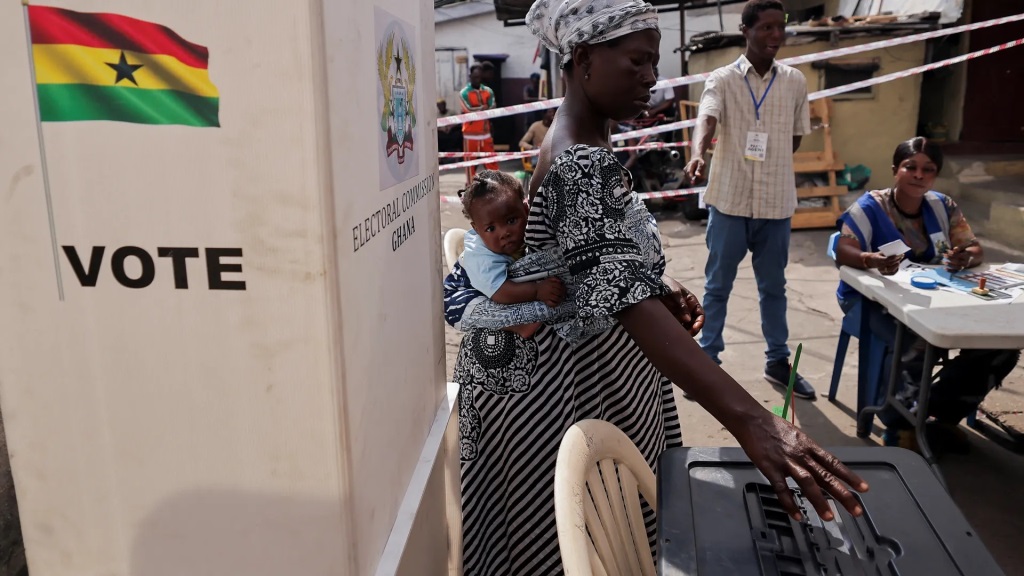Feature/OPED
The Impact of Central Bank Digital Currencies on Financial Inclusion and Retail Banks: What Does it Mean for Africa?

More than half of African citizens, around 95 million people, do not have a traditional bank account. With 57% of the African population currently unbanked, challenges have arisen as to how these citizens can access economic opportunities. Bringing the unbanked into the financial mainstream is one of the principal advantages that a Central Bank Digital Currency (CBDC) offers—particularly to less developed countries with large percentages of unbanked in their population. A key feature of many retail CBDC projects is the ability of individuals to access a digital currency account offline as well as online.
“This is important as it effectively decouples financial inclusion from access to the internet,” says Marion Laboure, Senior Strategist at Deutsche Bank Research and co-author of a recent white paper on digital currencies. Thus, people will be able to make CBDC transactions over basic mobile devices, using stored value cards, for example, or even text messages.
However, the financial inclusion benefit is not a given, warns Ashlin Perumall, Partner at Baker McKenzie in Johannesburg. “To lay claim to this feature, the system for a CBDC needs to be designed with inclusion in mind.”
Offline access is one such design element, but there are more. For example, the system must be interoperable with the diverse payment mechanisms used in an economy, and it must be accepted by merchants. It also requires simplified KYC (know-your-customer) and AML (anti-money laundering) processes.
“Such a design will not only foster inclusion, but also a competitive environment where private sector companies—banks and merchants—can both interoperate with the CBDC and compete among themselves to drive down the prices of services to individuals,” says Perumall.
So far, one country in Africa has launched a CBDC – Nigeria, and three others have CBDCs in pilot – Ghana, South Africa and Tunisia. Globally, as of June 2023, 11 countries or their currency unions had fully launched digital currencies, 21 had embarked on pilots, 32 had them under development and another 46 were at earlier stages of researching them. Some initiatives are exclusively for retail CBDCs (including the 11 already launched), some for exclusively wholesale ones, and several large economies (such as China, the US, and the Eurozone) are exploring the launch of both.
For Nigeria, says Perumall, one impetus for launching a CBDC is to shore up the use of its own currency in domestic payments, thereby reducing use of the dollar, as well as to increase the visibility and traceability of money flows. “There, and in other African countries, CBDCs could solve problems that aren’t currently being solved,” Perumall says.
With the exception of Nigeria, all of the 11 that have launched CBDCs thus far are small economies in the Caribbean region. According to Laboure, the major motivation for these countries was to expand financial inclusion, as most have large numbers of un- and underbanked citizens.
The world’s central banks
The world’s central banks understand that the future of money is digital. As payments shift online, the use of cash declines and the fortunes of crypto assets rise and fall, central bankers realise that their ability to command the use of money in their economies could weaken and that the financial exclusion of un- and underbanked citizens could be cemented. While the widespread introduction of central bank digital currencies (CBDCs), especially in the world’s major economies, is not imminent, the groundwork being conducted in this area is detailed and in-depth, such that many central banks will be ready to launch when their governments deem the circumstances to be right. Before that time comes, central banks have choices to make about the design of their CBDC systems, particularly those earmarked for retail use.
There is currently less urgency in larger, wealthier economies to move toward CBDC launch. Singapore is a case in point. After completing a pilot in late 2022, its central bank, the Monetary Authority of Singapore (MAS), stated that: “The use cases for a retail CBDC are unclear, given that electronic payments … are pervasive, and households and firms … are already able to transact digitally in a fast, secure and seamless manner today.”
Speaking of wealthy economies more broadly, Perumall also cites the travails of cryptocurrency markets as a reason for central banks to hold off. “Crypto threats to sovereign liquidity have receded somewhat in the past year,” he says.
Nonetheless, several major economies are expected to launch CBDCs this decade. “It’s a question not of if but of when,” says Laboure.
Where the private sector fits in
Implicit in the above—and an altogether new departure in the history of banking—is the existence of a direct relationship between individual citizens and their country’s central bank, in which the former hold a CBDC account with the latter. In some countries’ designs, citizens may use a mobile app to access that account directly, but it is more likely that private sector banks will play the role of intermediary in a two-tiered digital banking system.
There are nevertheless concerns that central banks could compete with retail banks for CBDC transactions, especially if the former opted to offer interest-bearing accounts. While not excluding that possibility, Perumall downplays disintermediation concerns. “Private sector banks not only provide the mechanism for distribution of money into an economy,” Perumall says, “but they also provide the services and the management of such services that go along with it—things that no central bank has the capacity to do.”
Concerns also exist that CBDC accounts could exacerbate a banking crisis if customers began shifting funds from their retail banks to the safer haven of the central bank. In Perumall’s view, however, the two-tiered system of most CBDC designs, along with non-interest-bearing accounts and limits on CBDC holdings, provide a safeguard of sorts against the possibility of bank runs.
Laboure similarly sees no CBDC threats to financial stability due to the same factors: their two-tiered design, zero interest accounts and caps on holdings. “Moreover, looking at countries where CBDCs are live, current adoption rates are low,” Laboure says.
Preparing for the day
As the example of Singapore suggests, the possibility of an extended wait for the widescale introduction of retail CBDCs is real. There is, after all, ample scepticism among politicians, and even some central bankers, about the very need for CBDCs. “A solution in search of a problem?” is a recurring question about CBDCs asked in recent months and years by authoritative sources who posit the view that a digital currency offers more risk than reward.
Private sector banks should not, however, assume that launches will be delayed indefinitely. Singapore’s MAS, for one, has made clear that it could bring forward the launch of its digital currency if “innovative uses emerge or there are signs that digital currencies not denominated in [Singapore dollars] are gaining traction as a medium of exchange locally”.
Retail banks will need to make preparations. That means, for example, readying their technology systems to be able to process CBDC transactions at scale; creating electronic wallets or other end-user interfaces so their customers can begin making CBDC transactions; and developing ideas for new services associated with the management of CBDCs. It is not too early for banks to begin taking such steps.
Central bank digital currencies launched or in pilot
| Launched (all retail) | In pilot |
| Anguilla
Bahamas Eastern Caribbean Antigua and Barbuda Dominica Grenada Montserrat Saint Kitts and Nevis Saint Lucia Saint Vincent and the Grenadines Jamaica Nigeria
|
Australia (retail, wholesale)
China (retail, wholesale) Ghana (retail) Hong Kong (retail, wholesale) India (retail, wholesale) Israel (retail) Iran (retail) Japan (retail, wholesale) Kazakhstan (retail) Malaysia (wholesale) Tunisia (wholesale) Russia (retail, wholesale) Saudi Arabia (wholesale) Singapore (wholesale) South Africa (wholesale) South Korea (retail) Sweden (retail) Thailand (retail, wholesale) Turkey (retail) United Arab Emirates (retail, wholesale) |
Source: Atlantic Council Geoeconomics Center, Central Bank Digital Currency Tracker (data sourced September 1, 2023)
Baker McKenzie’s Ashlin Perumall and Deutsche Bank’s Marion Laboure were interviewed as part of the global law firm’s The Next Decade in Fintech series.
Feature/OPED
The Future of Payments: Key Trends to Watch in 2025

By Luke Kyohere
The global payments landscape is undergoing a rapid transformation. New technologies coupled with the rising demand for seamless, secure, and efficient transactions has spurred on an exciting new era of innovation and growth. With 2025 fast approaching, here are important trends that will shape the future of payments:
1. The rise of real-time payments
Until recently, real-time payments have been used in Africa for cross-border mobile money payments, but less so for traditional payments. We are seeing companies like Mastercard investing in this area, as well as central banks in Africa putting focus on this.
2. Cashless payments will increase
In 2025, we will see the continued acceleration of cashless payments across Africa. B2B payments in particular will also increase. Digital payments began between individuals but are now becoming commonplace for larger corporate transactions.
3. Digital currency will hit mainstream
In the cryptocurrency space, we will see an increase in the use of stablecoins like United States Digital Currency (USDC) and Tether (USDT) which are linked to US dollars. These will come to replace traditional cryptocurrencies as their price point is more stable. This year, many countries will begin preparing for Central Bank Digital Currencies (CBDCs), government-backed digital currencies which use blockchain.
The increased uptake of digital currencies reflects the maturity of distributed ledger technology and improved API availability.
4. Increased government oversight
As adoption of digital currencies will increase, governments will also put more focus into monitoring these flows. In particular, this will centre on companies and banks rather than individuals. The goal of this will be to control and occasionally curb runaway foreign exchange (FX) rates.
5. Business leaders buy into AI technology
In 2025, we will see many business leaders buying into AI through respected providers relying on well-researched platforms and huge data sets. Most companies don’t have the budget to invest in their own research and development in AI, so many are now opting to ‘buy’ into the technology rather than ‘build’ it themselves. Moreover, many businesses are concerned about the risks associated with data ownership and accuracy so buying software is another way to avoid this risk.
6. Continued AI Adoption in Payments
In payments, the proliferation of AI will continue to improve user experience and increase security. To detect fraud, AI is used to track patterns and payment flows in real-time. If unusual activity is detected, the technology can be used to flag or even block payments which may be fraudulent.
When it comes to user experience, we will also see AI being used to improve the interface design of payment platforms. The technology will also increasingly be used for translation for international payment platforms.
7. Rise of Super Apps
To get more from their platforms, mobile network operators are building comprehensive service platforms, integrating multiple payment experiences into a single app. This reflects the shift of many users moving from text-based services to mobile apps. Rather than offering a single service, super apps are packing many other services into a single app. For example, apps which may have previously been used primarily for lending, now have options for saving and paying bills.
8. Business strategy shift
Recent major technological changes will force business leaders to focus on much shorter prediction and reaction cycles. Because the rate of change has been unprecedented in the past year, this will force decision-makers to adapt quickly, be decisive and nimble.
As the payments space evolves, businesses, banks, and governments must continually embrace innovation, collaboration, and prioritise customer needs. These efforts build a more inclusive, secure, and efficient payment system that supports local to global economic growth – enabling true financial inclusion across borders.
Luke Kyohere is the Group Chief Product and Innovation Officer at Onafriq
Feature/OPED
Ghana’s Democratic Triumph: A Call to Action for Nigeria’s 2027 Elections

In a heartfelt statement released today, the Conference of Nigeria Political Parties (CNPP) has extended its warmest congratulations to Ghana’s President-Elect, emphasizing the importance of learning from Ghana’s recent electoral success as Nigeria gears up for its 2027 general elections.
In a statement signed by its Deputy National Publicity Secretary, Comrade James Ezema, the CNPP highlighted the need for Nigeria to reclaim its status as a leader in democratic governance in Africa.
“The recent victory of Ghana’s President-Elect is a testament to the maturity and resilience of Ghana’s democracy,” the CNPP stated. “As we celebrate this achievement, we must reflect on the lessons that Nigeria can learn from our West African neighbour.”
The CNPP’s message underscored the significance of free, fair, and credible elections, a standard that Ghana has set and one that Nigeria has previously achieved under former President Goodluck Jonathan in 2015. “It is high time for Nigeria to reclaim its position as a beacon of democracy in Africa,” the CNPP asserted, calling for a renewed commitment to the electoral process.
Central to CNPP’s message is the insistence that “the will of the people must be supreme in Nigeria’s electoral processes.” The umbrella body of all registered political parties and political associations in Nigeria CNPP emphasized the necessity of an electoral system that genuinely reflects the wishes of the Nigerian populace. “We must strive to create an environment where elections are free from manipulation, violence, and intimidation,” the CNPP urged, calling on the Independent National Electoral Commission (INEC) to take decisive action to ensure the integrity of the electoral process.
The CNPP also expressed concern over premature declarations regarding the 2027 elections, stating, “It is disheartening to note that some individuals are already announcing that there is no vacancy in Aso Rock in 2027. This kind of statement not only undermines the democratic principles that our nation holds dear but also distracts from the pressing need for the current administration to earn the trust of the electorate.”
The CNPP viewed the upcoming elections as a pivotal moment for Nigeria. “The 2027 general elections present a unique opportunity for Nigeria to reclaim its position as a leader in democratic governance in Africa,” it remarked. The body called on all stakeholders — including the executive, legislature, judiciary, the Independent National Electoral Commission (INEC), and civil society organisations — to collaborate in ensuring that elections are transparent, credible, and reflective of the will of the Nigerian people.
As the most populous African country prepares for the 2027 elections, the CNPP urged all Nigerians to remain vigilant and committed to democratic principles. “We must work together to ensure that our elections are free from violence, intimidation, and manipulation,” the statement stated, reaffirming the CNPP’s commitment to promoting a peaceful and credible electoral process.
In conclusion, the CNPP congratulated the President-Elect of Ghana and the Ghanaian people on their remarkable achievements.
“We look forward to learning from their experience and working together to strengthen democracy in our region,” the CNPP concluded.
Feature/OPED
The Need to Promote Equality, Equity and Fairness in Nigeria’s Proposed Tax Reforms

By Kenechukwu Aguolu
The proposed tax reform, involving four tax bills introduced by the Federal Government, has received significant criticism. Notably, it was rejected by the Governors’ Forum but was still forwarded to the National Assembly. Unlike the various bold economic decisions made by this government, concessions will likely need to be made on these tax reforms, which involve legislative amendments and therefore cannot be imposed by the executive. This article highlights the purposes of taxation, the qualities of a good tax system, and some of the implications of the proposed tax reforms.
One of the major purposes of taxation is to generate revenue for the government to finance its activities. A good tax system should raise sufficient revenue for the government to fund its operations, and support economic and infrastructural development. For any country to achieve meaningful progress, its tax-to-GDP ratio should be at least 15%. Currently, Nigeria’s tax-to-GDP ratio is less than 11%. The proposed tax reforms aim to increase this ratio to 18% within the next three years.
A good tax system should also promote income redistribution and equality by implementing progressive tax policies. In line with this, the proposed tax reforms favour low-income earners. For example, individuals earning less than one million naira annually are exempted from personal income tax. Additionally, essential goods and services such as food, accommodation, and transportation, which constitute a significant portion of household consumption for low- and middle-income groups, are to be exempted from VAT.
In addition to equality, a good tax system should ensure equity and fairness, a key area of contention surrounding the proposed reforms. If implemented, the amendments to the Value Added Tax could lead to a significant reduction in the federal allocation for some states; impairing their ability to finance government operations and development projects. The VAT amendments should be holistically revisited to promote fairness and national unity.
The establishment of a single agency to collect government taxes, the Nigeria Revenue Service, could reduce loopholes that have previously resulted in revenue losses, provided proper controls are put in place. It is logically easier to monitor revenue collection by one agency than by multiple agencies. However, this is not a magical solution. With automation, revenue collection can be seamless whether it is managed by one agency or several, as long as monitoring and accountability measures are implemented effectively.
The proposed tax reforms by the Federal Government are well-intentioned. However, all concerns raised by Nigerians should be looked into, and concessions should be made where necessary. Policies are more effective when they are adapted to suit the unique characteristics of a nation, rather than adopted wholesale. A good tax system should aim to raise sufficient revenue, ensure equitable income distribution, and promote equality, equity, and fairness.
-

 Feature/OPED5 years ago
Feature/OPED5 years agoDavos was Different this year
-
Travel/Tourism8 years ago
Lagos Seals Western Lodge Hotel In Ikorodu
-

 Showbiz2 years ago
Showbiz2 years agoEstranged Lover Releases Videos of Empress Njamah Bathing
-

 Banking6 years ago
Banking6 years agoSort Codes of GTBank Branches in Nigeria
-

 Economy2 years ago
Economy2 years agoSubsidy Removal: CNG at N130 Per Litre Cheaper Than Petrol—IPMAN
-

 Banking2 years ago
Banking2 years agoFirst Bank Announces Planned Downtime
-

 Sports2 years ago
Sports2 years agoHighest Paid Nigerian Footballer – How Much Do Nigerian Footballers Earn
-

 Technology4 years ago
Technology4 years agoHow To Link Your MTN, Airtel, Glo, 9mobile Lines to NIN























